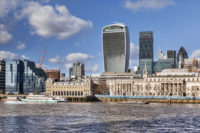- Selling
- Buying
- Landlords
- Renting
- New homes
- House prices
- International services
International offices
China, Hong Kong SAR, India, Indonesia, Malaysia, Middle East, Pakistan, Qatar, Singapore, South Africa, Thailand and Turkey
Learn more - Contact
- News
- Contact
- About us
- My B&R
Best property investment options for landlords
- Landlords news
- 13.09.17
- Marc von Grundherr
|
Getting your Trinity Audio player ready...
|
Property investors and landlords fall broadly into two categories, those who have a buy-to-let residential property portfolio and those who invest in commercial ventures. They are both very different propositions and while many property investment management firms will be quick to note the appeal of both, it’s worth weighing up each market before you invest.
Writing for City A.M. Richard Brown of Centre for London notes that: “Affordability constraints hit the restaurants and hotels that sustain London’s global services, and the cultural and creative buzz that gives London its “soft power” and also makes it a magnet for talent. If London is to thrive outside the EU, it needs to sharpen its offer for workers and businesses alike.”
 Brexit uncertainty has tainted commercial and residential property to a greater and lesser degree. It has unsettled European workers taking long-term tenancies and cast the seeds of doubt for European companies whether Britain is the best base for offices. Even the Royal Institution of Chartered Surveyors (RICS) has noted its effect: “Anecdotally, political uncertainty is cited as a factor weighing on occupier and investor decisions, with hesitancy now extending to some areas beyond London.”
Brexit uncertainty has tainted commercial and residential property to a greater and lesser degree. It has unsettled European workers taking long-term tenancies and cast the seeds of doubt for European companies whether Britain is the best base for offices. Even the Royal Institution of Chartered Surveyors (RICS) has noted its effect: “Anecdotally, political uncertainty is cited as a factor weighing on occupier and investor decisions, with hesitancy now extending to some areas beyond London.”
There are other factors at work too. Retailers have long been feeling the pinch of austerity measures as rising inflation has meant higher costs for goods and services passed on to consumers. High street retailers have also had to contend with changing habits as online shopping increases in popularity. RICS reported that demand to rent commercial property had levelled off for the first time in almost five years and the British Retail Consortium heralded a fall of 3% in employment in the retail sector in 2016.
The economy was also off to a weak start in 2017, its worst since 2012, growing by just 0.2% in the first three months of 2017 and 0.3% from April to June. On the face of it, investment in commercial property seems an unattractive option – until other aspects are considered. Growth in online shopping has actually boosted demand for industrial space and warehouses according to RICS; while the drop in the value of the pound has meant foreign investors are getting more ‘bang for their buck’ with commercial units.
 It is this latter point that is most significant. Commercial property investment volumes in the UK increased by 1% in the first half of 2017 to £27.2bn. Research by commercial consultancy group Cushman & Wakefield showed Asia Pacific investment in London property is at a five-year high and accounted for almost half the deals in the first six months of 2017. In March, the ‘Cheesegrater’ building at 122 Leadenhall Street was bought for £1.135bn by Chongqing-based CC Land Holdings; in June, Cheung Kei Group completed a £410m purchase of 20 Canada Square, a 12-story building in Canary Wharf (the largest deal in the area since 2014); and, in the bigest commercial property deal in the UK to date, the ‘Walkie Talkie’ building at 20 Fenchurch Street was bought for £1.3bn by Lee Kum Kee Group, a Hong Kong based condiments company.
It is this latter point that is most significant. Commercial property investment volumes in the UK increased by 1% in the first half of 2017 to £27.2bn. Research by commercial consultancy group Cushman & Wakefield showed Asia Pacific investment in London property is at a five-year high and accounted for almost half the deals in the first six months of 2017. In March, the ‘Cheesegrater’ building at 122 Leadenhall Street was bought for £1.135bn by Chongqing-based CC Land Holdings; in June, Cheung Kei Group completed a £410m purchase of 20 Canada Square, a 12-story building in Canary Wharf (the largest deal in the area since 2014); and, in the bigest commercial property deal in the UK to date, the ‘Walkie Talkie’ building at 20 Fenchurch Street was bought for £1.3bn by Lee Kum Kee Group, a Hong Kong based condiments company.
As a direct result, prime office and commercial property prices leapt by a welcome 10-15% in May. It is comforting too that the design and planned long-term use of the buildings are being realised giving a boost to other British industries such as design, architecture, construction and tourism. The Walkie Talkie, for example, is the sixth-tallest building in London, it offers a 360-degree view across the city, was designed by Rafael Viñoly Architects and features a ‘Sky Garden’ tourist attraction.
Beyond the quality of the commercial spaces themselves, the draw for Asia Pacific investors is both the depreciation in the pound and the inflated prices they are facing trying to buy in their own market. For a premium office building in Hong Kong for example, investors are facing an outlay in excess of HK$20bn with a lower yield than on a prime London location (2.9% for Hong Kong and 3.5% for London – though industry stats have this pegged at 4.7% in June, expected to rise to 5.5% later in the year.) Commercial units for retail may be suffering a decline in fortunes but commercial units for offices (and on site leisure facilities such as gyms, bars and restaurants) aren’t. In the first half of the year offices accounted for 39% of commercial investment. And with foreign buyers reaping the benefits of holding offices in prime London locations there’s hope that European companies will put to rest any Brexit doubts and stay put.
So, provided the location and building appeals to foreign buyers, investment in commercial developments continues to be an attractive option. However, it’s still an investment gamble; residential units on the other hand are less so. In addition, residential investment offers full control of capital outlay and income in comparison to commercial investment which is a fund managed by others.
Since the global financial crisis of 2007, the residential property market has seen huge changes. Unchecked lending from banks and building societies for property has been highlighted as one of main causes of the crisis and banks and building societies are now under pressure to adhere to strict affordability tests before agreeing mortgages. The rise in house prices however, has continued unabated and the average house price for London now stands at £478,142 – up 78% since 2007. The result is that for many, especially in London, renting is a long-term housing solution.
 Whether it is an affordability issue or a lifestyle choice or down to overseas workers being based here as their careers progress or even domestic and foreign students seeking a study base, the fact remains that demand for high quality rental apartments has risen beyond all expectations.
Whether it is an affordability issue or a lifestyle choice or down to overseas workers being based here as their careers progress or even domestic and foreign students seeking a study base, the fact remains that demand for high quality rental apartments has risen beyond all expectations.
For buy-to-let investors (domestic and overseas) it is a critical demand in a housing market that isn’t displaying the ‘pressure cooker’ signs of other countries. Hong Kong, for example, is another market where demand outstrips supply but its prices (and stamp duty taxes) are skyrocketing, so much so that it is the most expensive place to buy property in the world. It is hard to imagine that after such a huge initial outlay, property investors will see profit from rentals in the short or even medium-term. London has no such issues – a weak pound means that property is comparatively inexpensive (at least for foreign investors) and low borrowing interest rates favour buy-to-let investors; while demand is so great that even the stamp duty increase of 3% on second or more property purchases won’t dent short-term profits. Especially when capital growth from property, especially residential property, exceeds other UK assets. Over the past 35 years, capital growth on commercial property has been 2.5% compared with 7.8% for residential in prime central London and 8.1% in Greater London. It is clear that the London property market has been strong enough to weather the vagaries of the world financial markets in the past and will continue to do so; as the Governor of the Bank of England Mark Carney remarked of the Brexit decision: “The question is not whether the UK will adjust but rather how quickly and how well.”
The UK market, specifically London, is in a good position globally even if there are concerns about leaving the EU and little confidence in the British government’s ability to negotiate a good Brexit trade deal (as highlighted by the general election’s hung parliament result). It still doesn’t affect Britain’s ‘safe’ title and its established system of government isn’t likely to experience civil war or a military coup for example.
If you look at Britain’s property market in a global context as the Organisation for Economic Co-operation and Development has done, it is mid-league in terms of pricing and demand. Many countries levy different tax bands for foreign and domestic property investors while the UK does not. It has favourable exchange rates and one of the lowest corporation tax bands in Europe. It makes London a ‘global city’ welcoming business and workers from all over the world.
 All these attributes are very attractive to domestic and foreign investors. The UK market has longevity from foreign trade, investment and industry – if temporarily not from Europe then still from the US and Pacific Asia (GMT straddles world time zones perfectly) – and from the quality and reputation of the educational institutions. The result is an unending supply of people from overseas who want to live and work here.
All these attributes are very attractive to domestic and foreign investors. The UK market has longevity from foreign trade, investment and industry – if temporarily not from Europe then still from the US and Pacific Asia (GMT straddles world time zones perfectly) – and from the quality and reputation of the educational institutions. The result is an unending supply of people from overseas who want to live and work here.
For property investors and landlords the message is clear, residential units in London continue to be in huge demand. Invest now and with low interest rates, the weakened pound combined with rising property prices, you’ll see good returns even in the short term. Commercial property however, is still a gamble post Brexit with London working hard to regain the confidence of European companies and attract the attention of US and Pacific Asia companies. Even with the uncertainty of the EU departure looming, London continues to be a thriving creative and commercial hub that is still open for business.
If you are considering a buy-to-let property investment and would like an up to date rental valuation, our online calculator can be found here.
Sign up to our newsletter
Subscribe
How much is your property worth?
Media enquiries
About the Author
Marc has been a board director since 2001 and oversees the company’s rental operations as well as developing new business. He is instrumental in the company’s expansion and works closely with Managing Director Anita Mehra to develop its core services. Read more about Marc von Grundherr here - Read full profileView all posts by Marc von Grundherr














